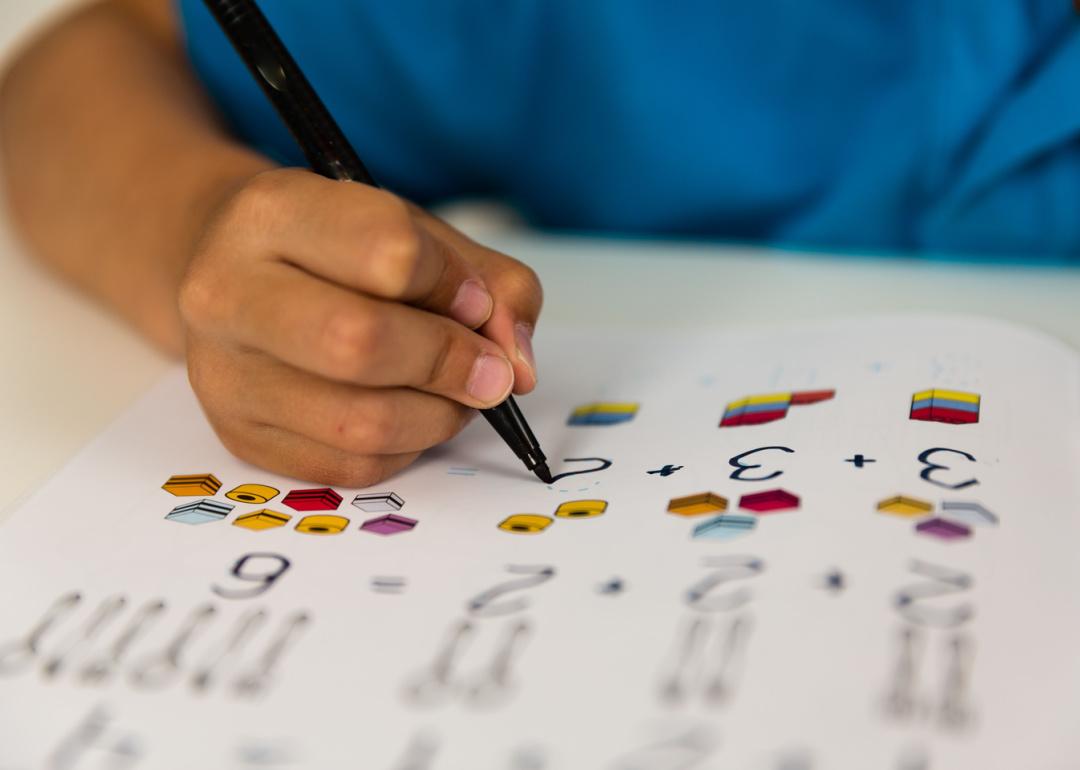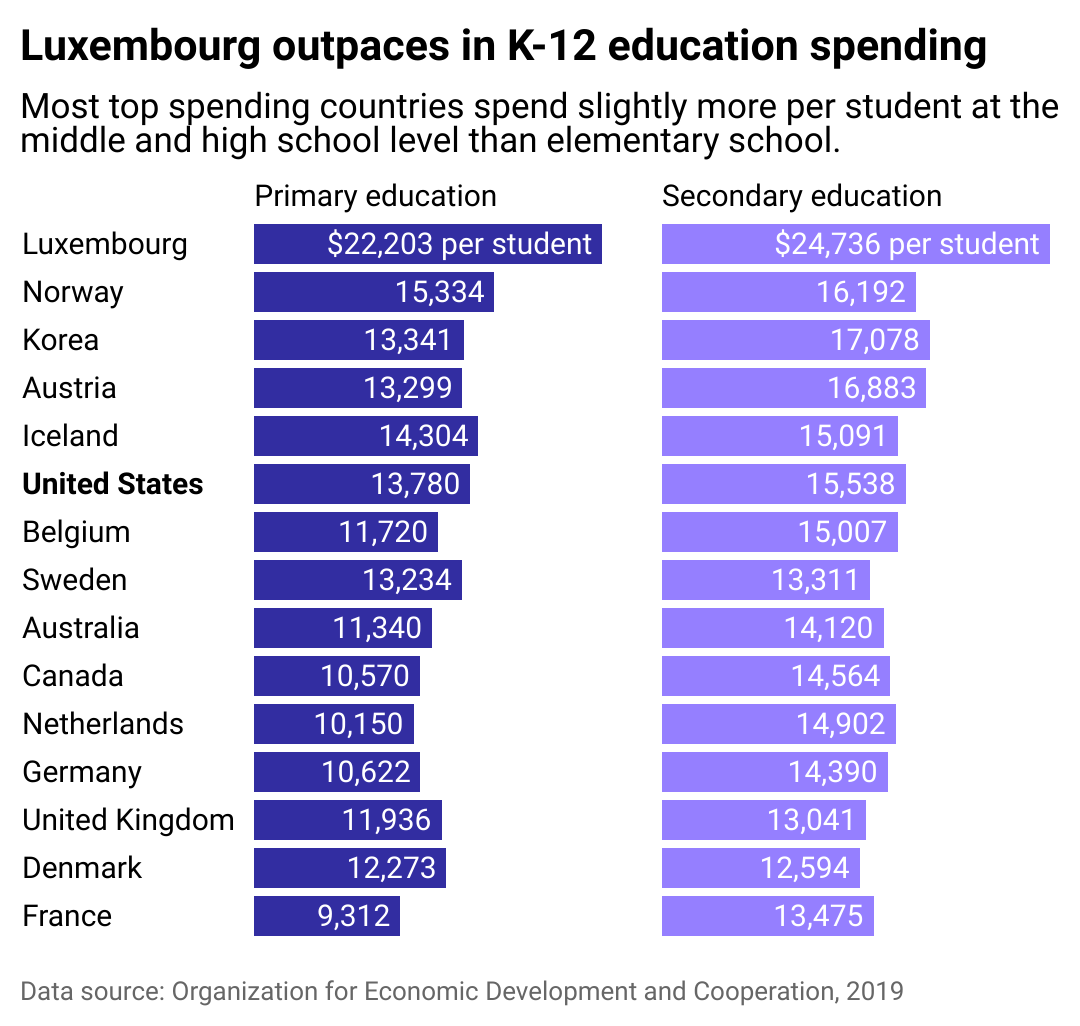How US K-12 spending compares to other countries

BIGANDT.COM // Shutterstock
How US K-12 spending compares to other countries
Child working on math assignment at desk.
In elementary and secondary education, the U.S. spends about $15,000 per student annually, ranking above the Organization for Economic Cooperation Development‘s median by 30%.
However, just because the U.S. ranks highly internationally doesn’t mean funding is equitably distributed among every child. Public school funding varies from state to state. Generally, almost half of the resources (48%) come from the state’s operating budget, fueled largely by sales, income, and payroll taxes.
Property taxes paid by homeowners in the school district contribute 44% of K-12 education funding, which explains why affluent neighborhoods usually have better-equipped and fully staffed schools. The federal government subsidizes special programs and grants—frequently geared toward underprivileged youth—completing the remaining 8% of expenditures.
The way each state balances the distribution of these three sources of funding determines how the needs of each school district are met. Thirty-five states have a progressive approach with formulas that compensate schools with a majority of low-income students, usually through state and federal endowments.
At a local level, the tendency is regressive since it reflects the demographics of each specific district. Residents with a greater amount of property wealth will pay higher property taxes that partially finance the schools in the area.
HeyTutor used data from the OECD to explore how education spending in the U.S. compares to other countries at different school levels.
![]()

HeyTutor
Education spending
Split bar chart showing Luxembourg spends the most in USD per student on education.
The amount spent annually per student in the U.S. is comparable to Germany’s yearly investment in secondary studies. However, the national budget for K-12 public education represents only 3.2% of the GDP in the U.S., a spending output that places it closer to Canada and Portugal. Seven member countries of the OECD spend 4% or more of their GDP on elementary and secondary funding. Israel spent the highest percentage at 4.8%.
The United Kingdom—where university tuition is one of the priciest in the world—spends about 30% less on elementary and secondary public education than the U.S. On the other hand, Norway, where a college education is free to students, invests about 20% more than the U.S. in K-12 subsidies.
In Norway’s case, 36% of the population seeks a post-secondary education. Meanwhile, in the U.S., 1.7 million people ages 16 to 24 enrolled in higher education institutions in 2021 for the first time, which is 61.8% of high school graduates. Nonetheless, Norway has a higher yearly percentage of college graduates.
The amount of money spent on a pupil’s basic education doesn’t mirror the quality of the instruction received. Their performance on international tests can more accurately reflect the efficiency of a national school system. The OECD runs the Program for International Student Assessment (PISA), which evaluates how 15-year-old students perform in math, reading, and science every three years.
In 2018, the latest data available, “Estonia, Canada, Finland, and Ireland were the highest-performing OECD countries in reading.” The organization concludes that since the year 2000, the importance of reading has not diminished, though the variety of written material has expanded to electronic formats.
About 16.5% of urban Chinese students tested and 14% of those in Singapore, “scored at Level 6 in mathematics, the highest level of proficiency” in PISA. Only 2.4% of OECD students were able to reach that score.
Trends in academic performance in a 20-year period are widely diverse among OECD nations, and even among students in each specific country. The main concern is a “widening of performance disparities,” with low-performing students consistently scoring low grades in periodical assessments, affecting the national average.
The OECD recommends governments gear their education funding and policies towards opportunely spotting students who need extra help “to ensure that learning gaps observed today don’t widen into larger social and economic inequalities in the future.”
Data reporting by Emma Rubin. Story editing by Robert Wickwire. Copy editing by Tim Bruns. Photo selection by Elizabeth Ciano.
This story originally appeared on HeyTutor and was produced and
distributed in partnership with Stacker Studio.
